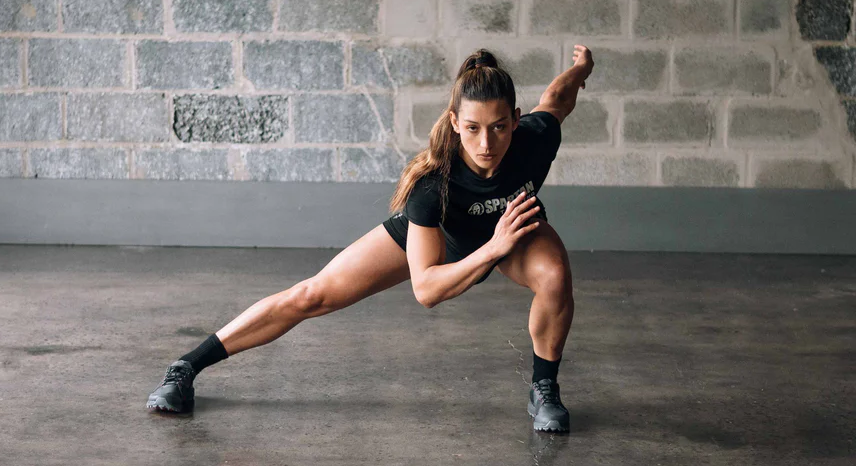How to Build Practical Strength with Functional Fitness?

Your fitness should serve a purpose beyond aesthetics. It should make you stronger, more agile, and better prepared for everyday movements. That is exactly what functional fitness is all about, building a body that performs well in real-world situations. Unlike conventional workouts that isolate muscles, functional fitness focuses on movement patterns you use daily. Whether you are lifting a heavy bag, sprinting up the stairs, or catching yourself from slipping, the strength and stability you develop through functional training translate directly to real life.
This type of training does not just enhance performance; it also reduces the risk of injury. By improving balance, mobility, endurance, and coordination, you train your body to work efficiently as a whole. Fitness trends like CrossFit, HIIT, and calisthenics have embraced this approach, proving that training with a purpose delivers superior results. Understanding and applying functional fitness principles ensures that you train smart, move better, and feel stronger in all aspects of life.
Key Components of Functional Fitness
Strength- The Power of Compound Movements
- Functional strength is not just about lifting weights, it is about being able to control and generate power through natural movement patterns.
- Compound exercises like squats, deadlifts, and overhead presses recruit multiple muscle groups simultaneously, allowing you to build real-world strength.
- Training with free weights or bodyweight movements instead of machines enhances coordination and stability, ensuring your muscles work in sync.
Mobility & Flexibility- The Foundation of Efficient Movement
- Mobility allows you to move freely, while flexibility ensures your muscles can stretch and contract without restriction.
- Dynamic stretching before workouts improves joint mobility, while static stretching after training enhances flexibility and prevents tightness.
- Incorporating yoga, foam rolling, and mobility drills into your routine helps you maintain optimal movement patterns and reduces the risk of injuries.
Endurance- The Role of Cardiovascular Fitness
- Functional fitness is not just about strength, you need endurance to sustain movement over time.
- Cardiovascular exercises such as rowing, cycling, and sprinting improve lung capacity and overall stamina.
- High-intensity interval training (HIIT) is an excellent way to develop endurance while simultaneously building muscle and burning fat.
Balance & Coordination- Core Stability for Everyday Tasks
- A strong core is the foundation of all movement, helping you maintain balance and coordination in unpredictable situations.
- Single-leg exercises, agility drills, and stability ball workouts train your body to react effectively to sudden changes in position.
- Core engagement in every movement ensures proper posture and reduces unnecessary strain on your joints.
The Best Functional Fitness Workouts
- Bodyweight exercises develop strength, mobility, and endurance without the need for equipment.
- Movements such as push-ups, lunges, planks, and pull-ups mimic real-life activities, making you more capable in daily tasks.
- These exercises can be modified to increase difficulty, ensuring progress over time.
Kettlebell Workouts- Full-Body Efficiency
- Kettlebell exercises are highly effective for building strength, endurance, and coordination.
- The kettlebell swing develops explosive power, enhancing hip strength and cardiovascular fitness.
- Turkish get-ups challenge core stability, coordination, and overall body control.
- Farmer’s carries improve grip strength, core stability, and endurance, making everyday tasks easier.
Agility Drills- Enhancing Speed and Reflexes
- Ladder drills improve foot speed, coordination, and reaction time, making you more agile.
- Plyometric exercises like box jumps develop explosive power and enhance fast-twitch muscle activation.
- Sled pushes simulate real-world pushing movements, improving lower body strength and endurance.
How to Incorporate Functional Fitness into Your Routine?
Best Training Frequency and Workout Duration
- To see progress, aim for 3-5 functional workouts per week, adjusting based on your fitness level and recovery needs.
- Sessions should last between 30-60 minutes, focusing on movement quality rather than excessive volume.
- Active recovery days, including mobility work and light movement, help prevent stiffness and aid in overall recovery.
Combining Functional Exercises with Traditional Workouts
- Functional movements complement traditional strength training, enhancing your ability to perform in all areas.
- You can integrate compound lifts like deadlifts and squats with agility drills and bodyweight movements for a well-rounded program.
- Rotating between strength-based workouts, endurance sessions, and mobility drills keeps training varied and effective.
Essential Equipment for Functional Training
Resistance Bands: Great for mobility work and adding progressive resistance to bodyweight exercises.
- Kettlebells: Ideal for dynamic movements that improve strength and coordination.
- Battle Ropes: Enhance cardiovascular endurance and upper body power.
- Medicine Balls: Effective for explosive movements like slams and rotational throws.
Functional fitness is about more than just working out, it is about training your body to perform optimally in real-world scenarios. Whether you are an athlete, a fitness enthusiast, or someone looking to improve movement quality, functional training offers lasting benefits. By incorporating compound movements, agility drills, and endurance-based exercises, you develop strength that serves a purpose beyond the gym.
Every step you take toward functional fitness improves how you move, react, and perform in daily activities. The more you train with intention, the more confident and capable you become. It is time to rethink your approach to fitness, train for life, not just for the gym. Start incorporating functional exercises into your routine and experience the difference in strength, mobility, and overall performance.
Improve real-life strength, mobility, and endurance with functional fitness exercises. Train smarter and move better with targeted workouts for peak performance.











